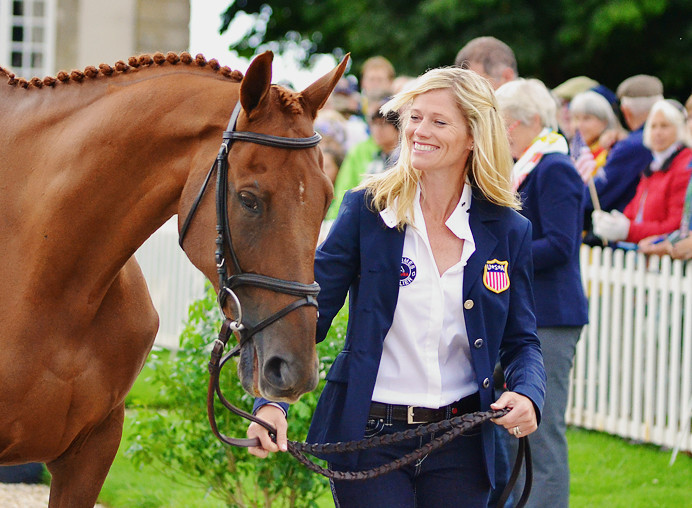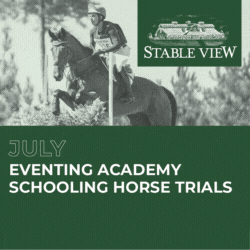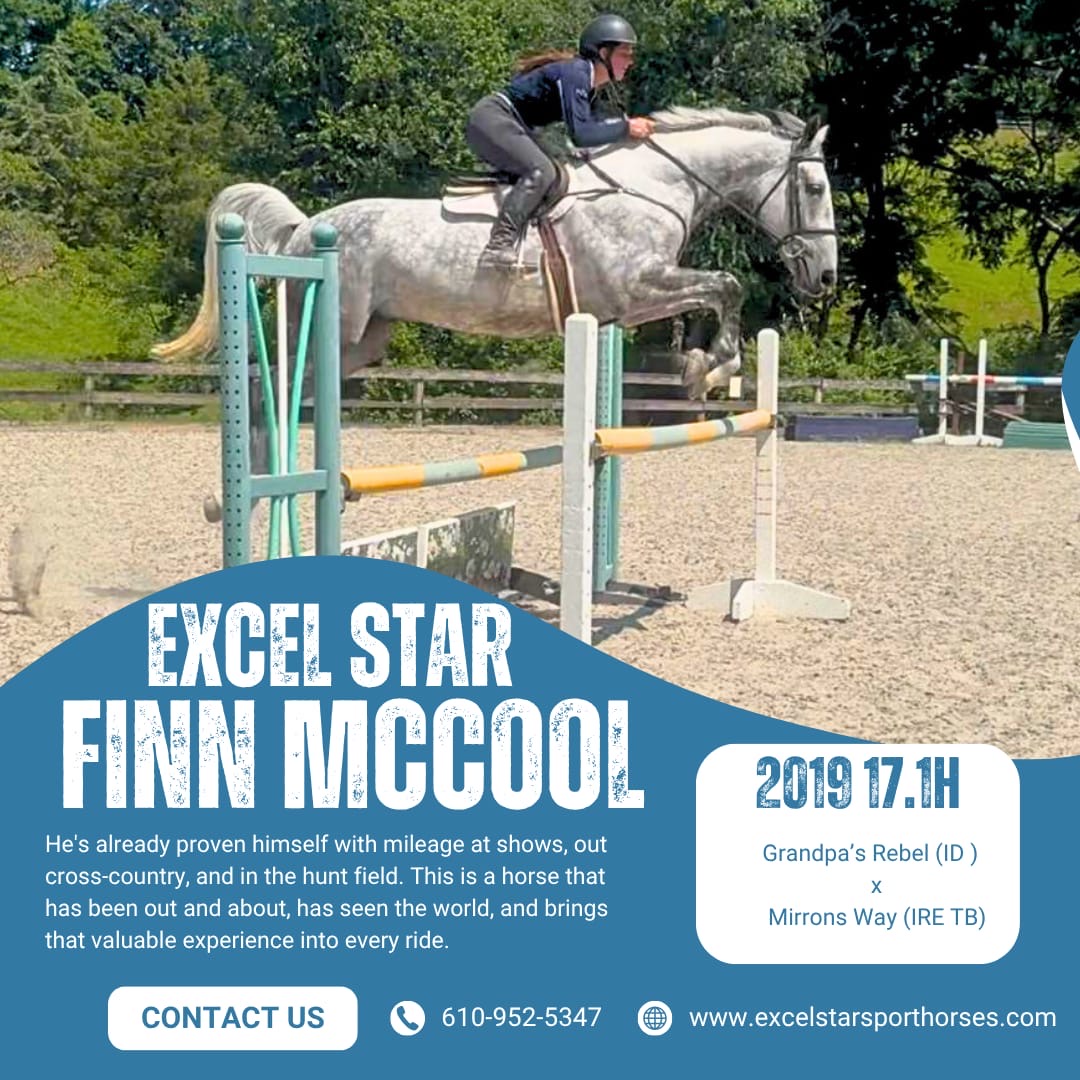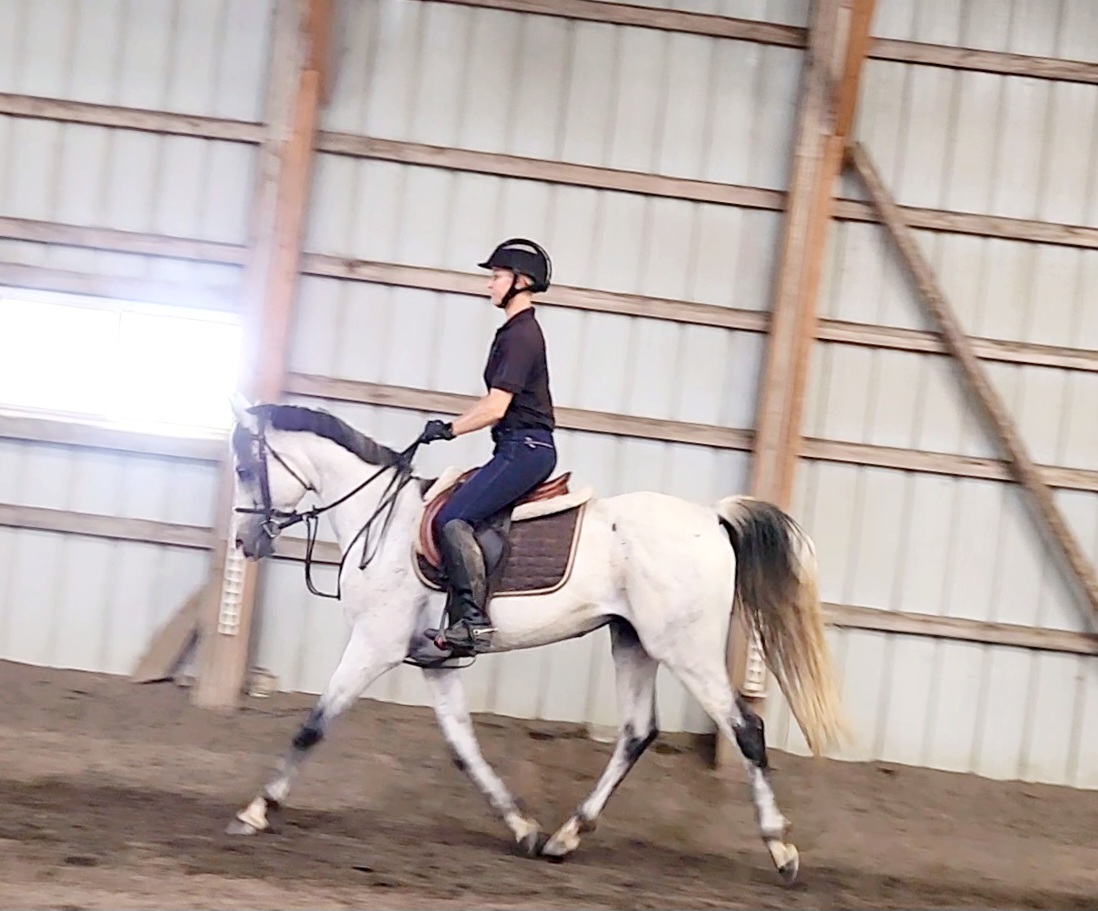The following article was written after an episode of Sinead Halpin Maynard’s podcast, In Stride on Ride iQ, with her husband and 4* rider/Road to the Horse Champion Tik Maynard. To learn more about Ride iQ’s innovative training platform, click here. Want to listen to the full episode? In Stride is available on Apple Podcasts, Spotify, and everywhere else you listen.

Sinead Halpin and Manoir de Carneville at WEG. Photo by Jenni Autry.
Our horses are always trying to tell us something, whether through positive or negative feedback. I mean, think about it. How many times have you been in a situation with your horse where they either licked their lips or pinned their ears back to let us know they are agreeing or disagreeing with the situation? Horses may be seen as complex animals, but the more we sit back and listen to what they are trying to tell us, the more we can understand.
U.S. 5* rider and Ride iQ coach Sinead Maynard sat down with her husband Tik Maynard on Ride iQ’s In Stride podcast to discuss horses’ love languages and how to utilize them for better understanding and connection.
Tik Maynard is the 2024 Road to the Horse World Champion, a sought after natural horsemanship coach, and he’s represented Canada at multiple World Championships and the Pan American games in eventing.

Tik Maynard works with a horse. Photo courtesy of Kaitlin Hartford.
Love Languages in Horses
Just like humans, horses have love languages. The five known love languages for humans are words of affirmation, quality time, physical touch, acts of service, and receiving gifts. According to Tik, a horse’s love languages include comfort, play, quality time and food.
Similarly to humans, horses may be given an adequate amount of love and attention and still have behavioral issues or a lack of understanding with their owner or rider. Why is this?
Humans typically resonate with one or two of the love languages, meaning that they typically notice, appreciate, and are influenced by these the most. Although the other three love languages may be given, they are not received and don’t resonate as much. The same goes for horses.
In order to gain a better understanding of our horses, the first step is determining what motivates them to be our partners. Through observation, Tik was able to notice how horses feel, think, and play to determine their love languages or how we can more effectively show our horses we care.
Love Language #1: Comfort
Today we’ll be discussing the first — and arguably the most important — love language in horses: comfort. To begin, think of horses like little kids. What matters to them most? Food, shelter, and water should be expected, but what comes next?
Just like little kids, horses seek comfort. They want to feel safe, heard, and respected. Already challenging enough, horses can’t verbally communicate with us, making it more difficult to determine what they are feeling. It’s through observing both the physical and emotional side of your horse that you will be able to begin to determine where they find the most comfort.

Photo by Sally Spickard.
Examples of Physical Comfort
When horses seek physical comfort, they are seeking to be seen, heard, and accepted. For example, a horse may continuously rub their head up against you when you take off the bridle after a ride. Some riders may see this as their horse becoming “pushy”, but what if it’s their way of expressing discomfort?
Put yourself in their shoes and picture how uncomfortable it is to have an itch you can’t reach. In these situations, rather than jumping to conclusions, taking the time to notice what your horse is trying to tell you and scratching their itches is a great way to show them love.
Another component of physical comfort is space and freedom. Some horses really appreciate having their own physical space. This can look like a horse who doesn’t love to be groomed or a horse whose happiness comes from being turned out and having free range. Making the appropriate changes in your horse’s routine to acknowledge your horse’s need for space and freedom can make a world of difference in your relationship with them.
Examples of Emotional Comfort
The other component of comfort is emotional comfort. This can present in a lot of different ways, some that you may have never seen. A horse expressing the need to attain emotional comfort can look like a horse who does not like being alone. As herd-bound animals, this can be quite common. Rather than forcing the situation and having your horse hack out alone on the trails from the start, the solution may be to have another horse hack out with you until your horse becomes more comfortable and emotionally balanced.
In these types of situations, it’s important to note that we must earn respect from our horses. We can recognize when our horses do or don’t like certain things by physical signs. When it comes to meeting your horse’s need for emotional comfort, take an empathetic and patient approach.

Pats for Off the Record. Photo by Shannon Brinkman Photography.
Showing Respect Through Action
What may be deciphered as a controversial statement, Tik explains that sometimes with the people that we love, there is a lack of respect or politeness. Instead, we should make an effort to demonstrate our love in part through respect and politeness? One way we can do this with horses is to have the patience to learn their preferences, notice their comfort or discomfort, and meet them with empathy.
Aim to be more present with your horse. Sit in the moment and notice what your horse is actually trying to tell you. By doing this you will begin to learn what your horse’s likes and dislikes are based on their actions. Some signs that your horse is comfortable include licking of the lips and chewing.
Listening to your horse’s feedback is an open-ended question. There are thousands of options, and the only way to know what works is through trial and error. The goal here is to recognize any sign of improvement, even if that’s just 1%. Sometimes things will happen that you’ve never heard or seen before, and that’s okay.
At that point, there’s no set of standards to follow. You’ll need to be creative. Think of your horse’s behavior as a puzzle you’re trying to solve. You may not know the answer right away, but the more you work to understand your horse and show them respect, the more they will be willing to reveal the answers.























